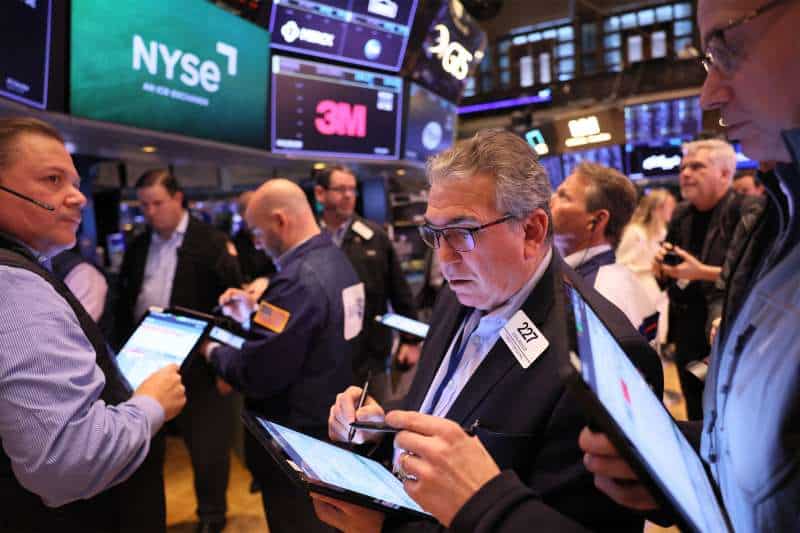US stocks typically see their worst performance of the year in September, but there are signs the market could avoid a steep downturn this time around.
This month has been the worst for stocks on average since 1928, according to Yardeni Research. That’s partly because, much like August, there is a lull in economic data that could catalyze a stock rally. While investors tend to go on vacation in August, leading to lower trading volumes and thus more volatility, Labor Day typically signals the end of summer.
Mark Hackett, chief of research at US investment firm Nationwide, says that there are several indications that the market is more stable this year than in 2022, when stocks sold off in the latter half of the year.
Since 1980, whenever the S&P 500 index gained more than 6% going into August, the rest of the year has been positive every year except 1987, with an average gain of 5.4%, according to Hackett.
The broad-based index finished this July up over 19% for the year, versus a 13% decrease during the same period last year.
“There’s a lot to like about where we are,” said Hackett.
The market has been less reactive during recent Federal Reserve policy meeting days, he said. The S&P 500 has been negative for only two of eight completed months this year. CNN’s Fear & Greed index, which looks at seven indicators of market sentiment, is at 56, or a “Greed” reading, compared to a “Fear” reading of 40 a year earlier.
While stocks fell roughly 2% in August, they still outperformed their 4% loss during the same month last year. Stocks also finished the last week of August with a powerful rally. The Dow Jones Industrial Average and Nasdaq Composite indexes saw their best weekly performance since July, while the S&P 500 notched its best gain since June.
Still, there are challenges ahead for the stock market.
Oil prices on Wednesday hit their highest level in nine months, after Saudi Arabia and Russia, the world’s biggest crude exporters, said they would extend output cuts through at least the end of the year.
Some economists say that prolonged, elevated energy prices could push up inflation for services such as freight. Prolonged inflation has the potential to extend the Federal Reserve’s fight to tamp down prices and in turn put more pressure on the US economy.
That could also put more strain on consumers’ wallets. Hackett said that while consumer strength has stayed resilient, which has helped power the economy, he’s monitoring whether it stays that way.
He added that while he’s cautiously optimistic that the market will stay strong through the end of the year, the rally’s over-reliance on mega-cap tech stocks, such as Nvidia (up 222% this year) and Meta Platforms (up 148%), is a point of concern.
“At the end of the year, that’s where we have to reassess our expectations,” he said.
Climate change is hurting major theme parks
Over the weekend, intense rain and flooding stranded more than 70,000 people at Burning Man in the Nevada desert.
It’s the latest example of how extreme weather, exacerbated by climate change, impacted major North American attractions this summer, reports my colleague Nathaniel Meyersohn.
The largest theme park companies — Six Flags, SeaWorld and Cedar Point-parent Cedar Fair — all were upended by extreme weather, including deadly flooding in the Northeast, record-breaking heat in the Southwest and California, and wildfires in Canada. Extreme heat in Florida also disrupted attendance at Walt Disney World and Universal Orlando this summer.
These attractions are dependent on weather, and climate change poses significant risks to their businesses. Theme parks are building indoor rides and changing ticket policies to respond to brutal weather conditions.

